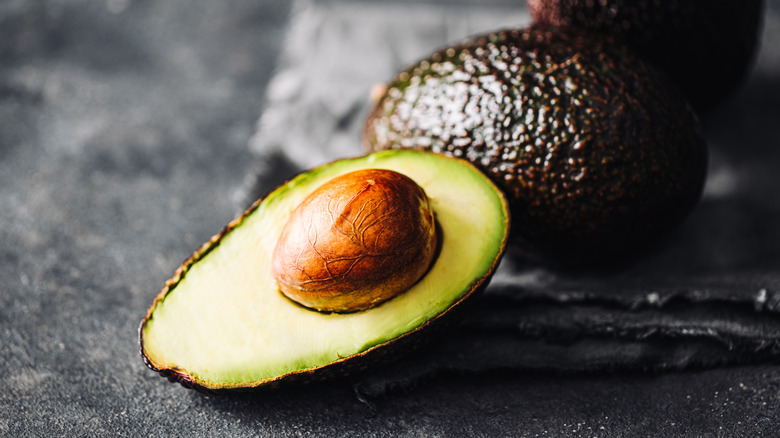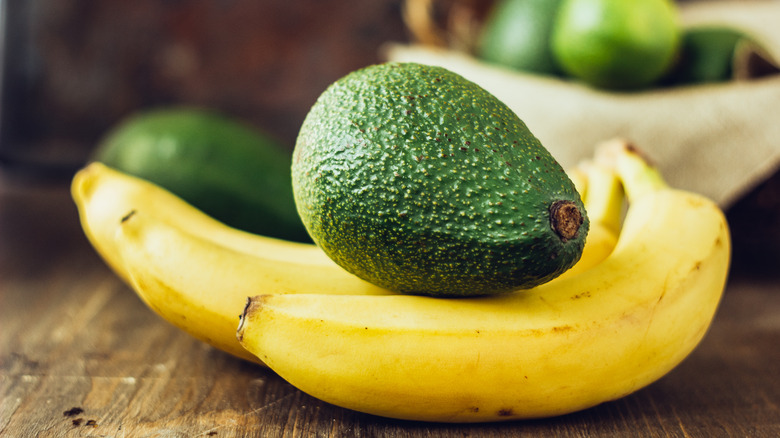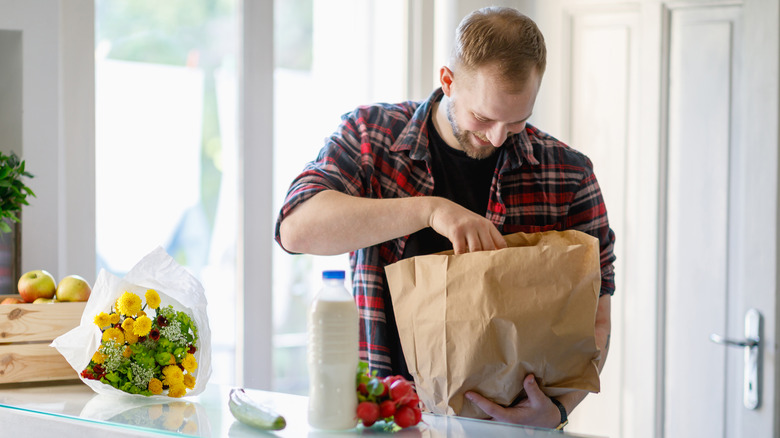No, You Shouldn't Try To Ripen Avocados With Rice
There's a hack going around the internet that claims putting avocados in rice (or flour) will help them ripen. The idea behind this is two-fold, depending on who you ask. As explained by the distributor Avocados From Mexico, the thought is that the rice traps the ethylene gas that ripens the fruit. However, gas, like water, will always find a way out, and a pile of rice is permeable. Submerging your avocado in rice is like carrying water in a sieve.
The other idea at play here is that a handful of rice will absorb moisture — a trick known to anyone who has ever dropped their phone in water. The thing is, avocados are not phones, and it's not necessary. If you're ripening one in a hot, humid kitchen using plastic, there may very well be excess moisture, but the better trick is to ripen it in a paper bag. The bag will absorb any moisture that the fruit kicks off, and the bag will do a better job of trapping the ethylene than rice.
Like a hangover, there are plenty of hacks, tricks, and promises, but the only thing that really works is time. As Dominica Rice-Cisneros of California restaurant Bombera told Food & Wine, "Don't waste your flour or rice." The rice can become contaminated with bacteria from the avocado skin, and you shouldn't cook it after it spends three days cradling one, a spokesperson from the FDA told The Kitchn.
The importance of ethylene
The concept that rice will help avocados ripen comes from a correct principle: Ethylene does, in fact, hasten ripening. Avocados are one of the few fruits that continue to ripen after they've been harvested, and anyone who has waited patiently for the blink-of-an-eye window knows there isn't much margin for error. The clock starts ticking as soon as they're picked — but ripening can be controlled by adjusting how much ethylene surrounds the fruit: Inhibiting ethylene will delay ripening, while higher concentrations promote it.
Ethylene is a hormone found in fruit as it ripens. During the ripening process, the fruit off-gasses or respirates, and ethylene is released in the gas it produces. The atmospheric ethylene stimulates more production of hormonal ethylene, leading to further ripening. By trapping the ethylene, you're concentrating it. An avocado emits between 140 and 180 parts per million of ethylene gas before peak respiration, according to a 1961 study published in Plant Physiology. And a 2016 study published in the Indian Journal of Science and Technology says the optimal ripening environment of an avocado has between just 10 and 100 parts per million of ethylene gas in the atmosphere. You don't need to trap the ethylene entirely for it to be effective, which means you shouldn't be promoting condensation — so you shouldn't need rice to soak it up.
Best way to store avocados for ripening
The 2016 study gives information on the optimal ripening environment for an avocado. It says an avocado should only be exposed to ethylene for 12 to 48 hours in a room between 59 degrees and 65 degrees Fahrenheit. A high relative humidity of 90% is ideal. Most importantly, it only has a 1% concentration of excess carbon dioxide, which impedes ripening and promotes rotting. Since the ripening container should breathe a bit anyway, and there should be some humidity, using rice to prevent moisture buildup is unnecessary.
So, how should you handle the rocks you bring home from the avocado display to turn them into delicious, creamy, ripe avocados? It's simple. Put them on the counter in a paper bag. Check them daily. Don't add rice.
Adding a banana to the bag of avocados could be useful to jumpstart the ethylene production on extremely unripe avocados because it will stimulate the hormone in the avocado. The 1961 study reports that only a 0.1 ppm concentration of ethylene is necessary to start the ripening process in an avocado, so you don't need to keep the banana in the bag for very long; it will increase the excess carbon dioxide concentration which causes rotting. So, while there may be something to the permeability of a bowl of rice allowing air exchange, it's unstudied and wasteful.


